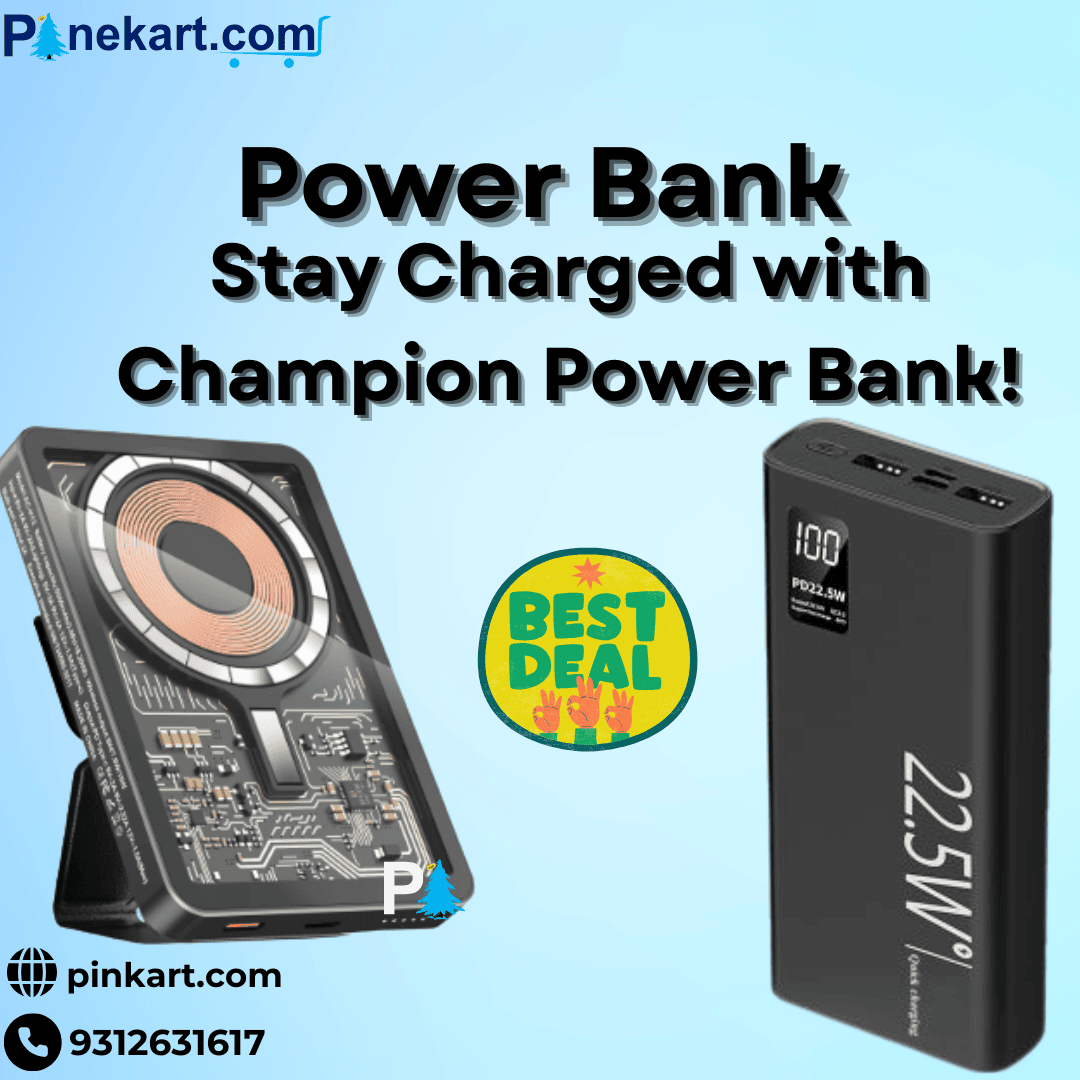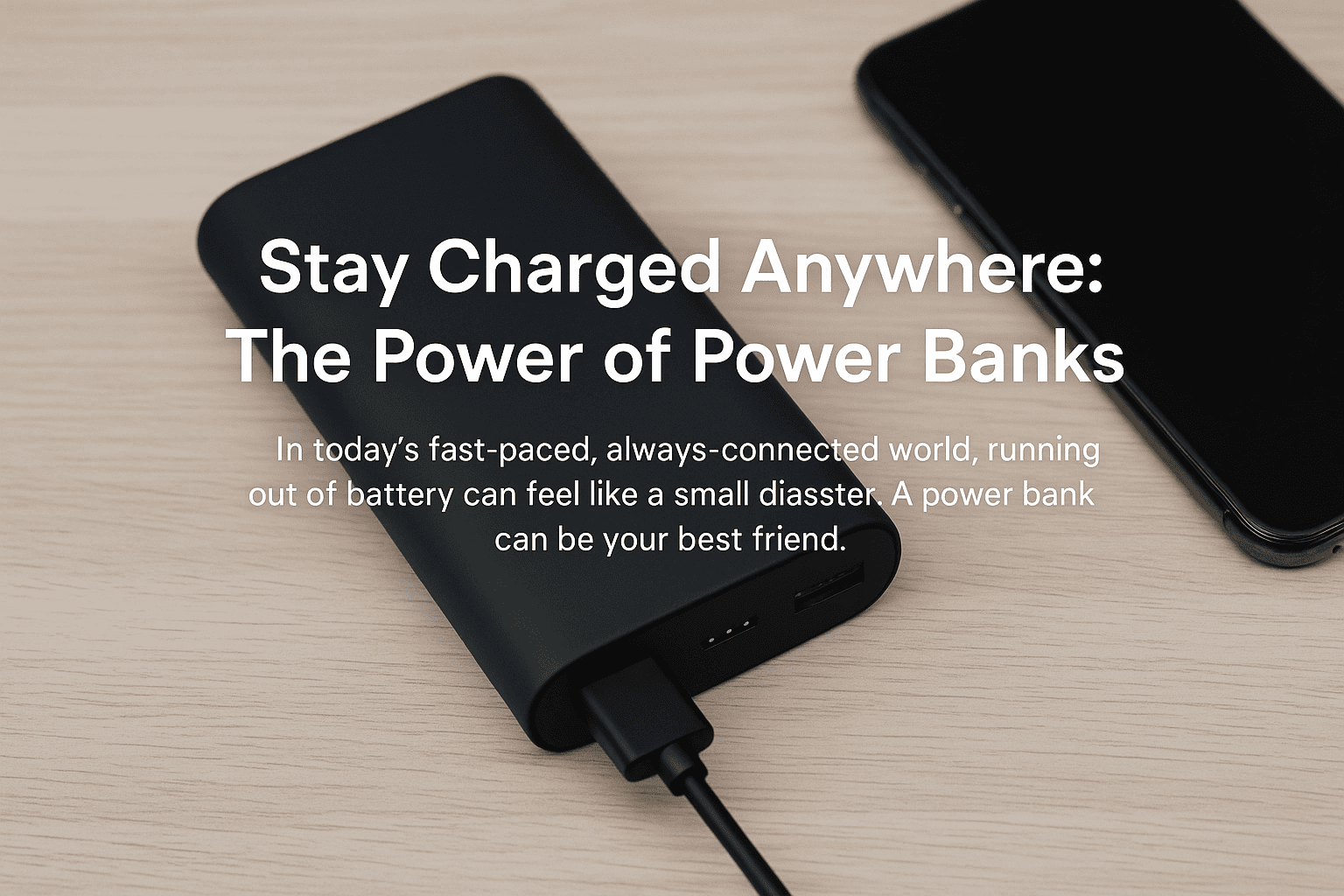Whether you're commuting, traveling, working remotely, or simply away from a power outlet, a power bank can be your best friend. These compact, portable chargers have become essential gadgets for anyone who relies on smartphones, tablets, or other USB-powered devices.
What is a Power Bank?
What is a Power Bank?
A power bank is a portable battery designed to recharge electronic devices on the go. Think of it as a mobile energy backup for your gadgets. Most power banks come with USB ports, allowing you to charge a range of devices like phones, Bluetooth headphones, smartwatches, cameras, and even some laptops.
Why Power Banks Are a Must-Have
Why Power Banks Are a Must-Have
1. Convenience and Portability
Power banks are lightweight, pocket-sized devices that you can carry anywhere. Whether you're hiking in the hills or stuck in a long meeting, you no longer need to search for a wall socket.
2. Multiple Device Charging
With power banks now offering multiple USB outputs, you can charge more than one device at a time—perfect for busy individuals or families on the go.
3. Fast Charging Technology
Modern power banks come equipped with fast-charging capabilities such as Quick Charge or Power Delivery (PD). These technologies allow your device to juice up in a fraction of the time.
4. Emergency Lifesaver
Power cuts? Forgotten your charger at home? A fully charged power bank ensures you’re never left disconnected during emergencies.
Features to Look For
Features to Look For
Before you buy a power bank, here are a few features to keep in mind:
Capacity (mAh): Higher capacity (like 10,000mAh or 20,000mAh) means more charging cycles. It’s ideal for travelers or heavy device users.
Number of Ports: If you often carry multiple devices, choose a model with at least two USB outputs.
Size and Weight: Slim, compact models are great for daily carry, while high-capacity models may be bulkier but worth it for long trips.
Charging Speed: Look for power banks with fast charging support for both input and output.
Eco-Friendly Options
Eco-Friendly Options
As sustainability becomes more important, some manufacturers now offer solar-powered or eco-conscious power banks. These models are ideal for outdoor enthusiasts and help reduce your carbon footprint.
Frequently Asked Questions (FAQs)
Q1: How long does it take to fully charge a power bank?
A: It depends on the power bank's capacity and input charging speed. A standard 10,000mAh power bank usually takes 4–6 hours to fully charge with a 2A charger.
Q2: Can a power bank charge a laptop?
A: Yes, but only certain models with USB-C Power Delivery (PD) support can charge laptops. Make sure to check compatibility with your laptop’s voltage and wattage requirements.
Q3: Is it safe to charge your phone overnight with a power bank?
A: Most modern power banks have auto cut-off features that stop supplying power once your phone is fully charged, making overnight charging generally safe.
Q4: What does mAh mean in a power bank?
A: mAh stands for milliampere-hour, which indicates the power bank's capacity. The higher the mAh, the more power it can store—and the more times it can charge your devices.
Q5: How do I know if my power bank is fully charged?
A: Most power banks have LED indicators. When all the lights are solid (not blinking), your power bank is fully charged.
Final Thoughts
Final Thoughts
A power bank is more than just a gadget—it's your backup lifeline in today’s digital world. As our reliance on electronic devices grows, having a reliable portable charger ensures you’re never out of touch, out of battery, or out of time. Whether you're a student, a traveler, or a techie, investing in a quality power bank is a smart move.
So next time you’re heading out, don’t forget your keys, wallet, and your power bank—because staying charged means staying connected.


